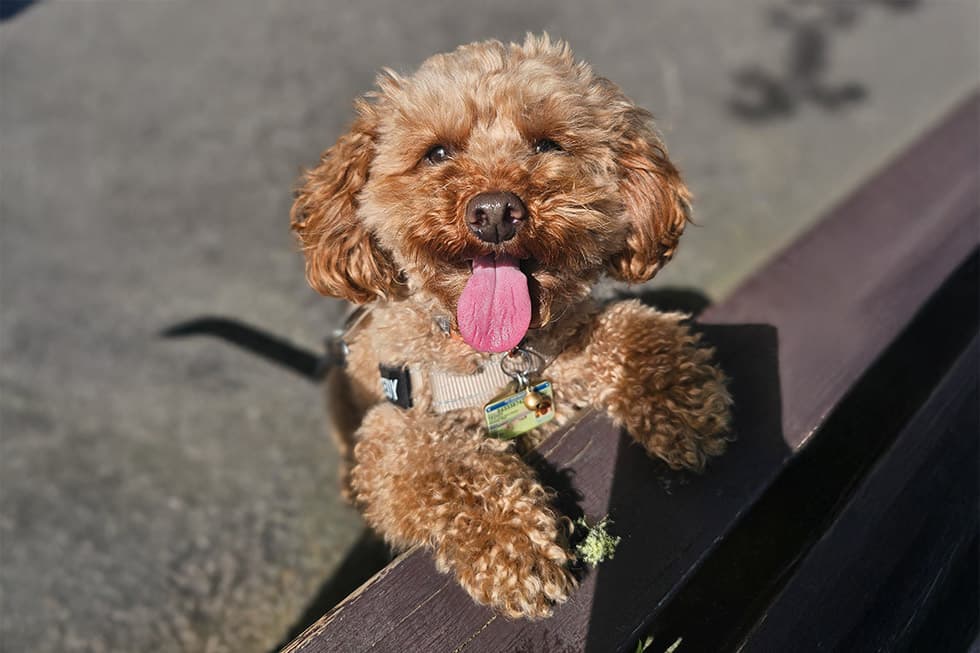The Hidden Beach Danger: Why Sand Ingestion Can Be Fatal for Dogs

That perfect, sun-soaked day at the beach with your dog—what could be better? The joyous sprints, the digging in the sand, the salty air. It's the stuff memories are made of. But what if I told you a hidden danger is lurking in that seemingly harmless sand? Many loving pet owners are completely unaware that something as simple as a game of fetch can turn into a life-threatening emergency.
It's a scary thought, right? Experts in pet wellness have been sounding the alarm about sand ingestion. A dog doesn't have to be eating sand by the pawful. It can happen innocently while they're grabbing a sandy ball, digging a hole with gusto, or even just licking their sand-covered toys. This accidental consumption can lead to some seriously scary health problems, namely intestinal blockages and a painful condition called sand impaction.
A Real-Life Scare: Teddy's Story
Let's make this real. Meet Rebecca de Gier from Melbourne and her wonderful dog, Teddy. During a family road trip, a fun day of beach play took a terrifying turn. Teddy was his usual energetic, playful self, chasing a soft toy along the shoreline. Rebecca had no clue that with every happy grab of his toy, he was also swallowing mouthfuls of sand.
It wasn't until after they got home that the red flags appeared. Teddy just wasn't right. He was restless, uncomfortable, and kept stretching into that "downward dog" yoga pose—a classic sign of stomach pain in canines. Rebecca's vet back home suspected a tummy ache, but her gut feeling told her it was more serious. A quick call to a local vet on the Gold Coast led them straight to the Animal Emergency Centre.
An X-ray confirmed their worst fears: Teddy had a significant case of sand impaction. The sand had literally formed a concrete-like blockage in his gut. His symptoms were a textbook case: restlessness, lethargy, no appetite, and an inability to find a comfortable position.
Thankfully, Teddy's story has a happy ending. The amazing vet team managed his pain and put him on IV fluids to help flush the sand through his system naturally. After an overnight stay, new X-rays showed the blockage had cleared. With a course of probiotics to help his stomach heal, Teddy was back to his happy self in no time. Rebecca was immensely relieved but left with a crucial lesson for all of us.
> My advice is simple: don't play fetch with your dog on the sand! Always do your homework when you're visiting new places. You've got to think about things you wouldn't normally consider, like hot pavement, ticks, and local parasites. And always, always trust your instincts. I knew something was wrong, and I'm so glad I acted on it. Also, please make sure you have pet insurance. That vet bill would have been massive otherwise. The whole thing was a complete accident; I never even thought sand could be a problem.
Red Flags: Spotting Sand Impaction Symptoms
So, what should you be looking out for after a beach trip? If your dog starts acting 'off,' it's time to pay close attention. An intestinal blockage from sand is a true medical emergency. Keep an eye out for these tell-tale signs:
- Vomiting, or even just unproductive dry heaving
- Extreme tiredness and lethargy
- A sudden loss of appetite
- A tender or swollen belly
- Straining to go to the bathroom with little or no result
- Diarrhea that looks gritty or has visible sand in it
If you spot any of these symptoms, don't wait. Get to a veterinarian immediately. When a dog swallows too much sand, especially wet sand, it clumps together in their intestines. Think of it like wet cement. It gets heavy, dense, and incredibly difficult for their system to pass, leading to intense pain and severe complications.
Smarter Beach Days: How to Keep Your Dog Safe
The good news? Preventing sand ingestion is totally manageable with a bit of planning. You can still enjoy the beach, just with a few new rules in your playbook.
- Bring a Mat: Lay down a blanket or mat for your dog to rest on. If you're bringing snacks or water for them, use elevated bowls on the mat to keep sand out of their food.
- Rethink Your Toy Choices: Leave the fuzzy tennis balls at home—they're sand magnets! Opt for solid, smooth toys like a rubber frisbee or a solid plastic ball that's easy to rinse off.
- Hydration is Key: A thirsty dog is more likely to lick at sandy surfaces or drink salty, sand-filled ocean water. Always have a bowl of fresh, clean water available for them.
- Supervise, Supervise, Supervise: Keep a close watch on your pup. If they're an obsessive digger, interrupt the behavior and redirect them to a different activity. Don't let them just sit there chomping on sandy toys.
- Rinse and Repeat: Before you pack up the car, give your dog a good rinse with fresh water. Pay special attention to their mouth and paws to wash away any lingering sand.
The Financial Safety Net: Why Pet Insurance Matters
Let's be honest, emergency vet visits are stressful enough without adding a massive bill to the equation. Treatment for sand impaction can easily run into the thousands, involving X-rays, IV fluids, overnight hospitalization, and sometimes even major surgery.
This is where having a good pet insurance plan can be an absolute lifesaver. It provides peace of mind, allowing you to make decisions based on what's best for your pet's health, not what your bank account can handle. Nobody ever plans for their perfect beach day to end in the veterinary ER, which is exactly why being prepared is one of the most responsible things we can do as pet parents.